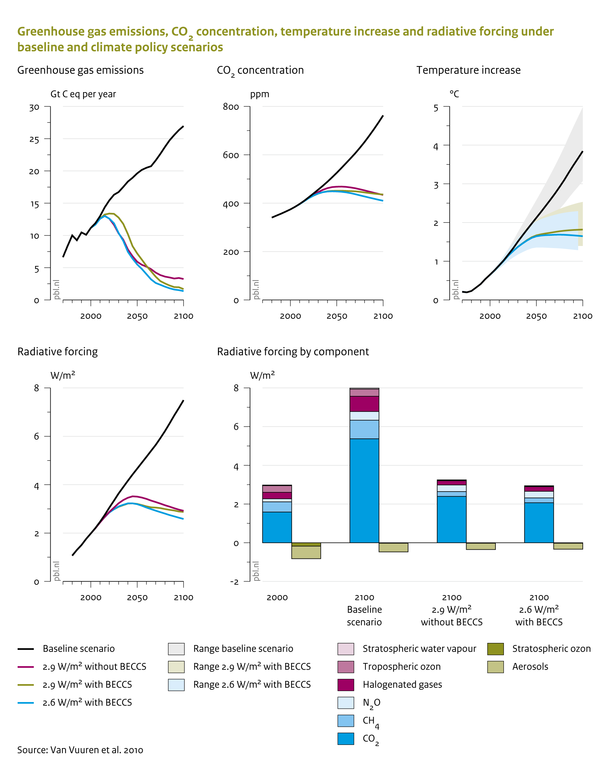Baseline figure Atmospheric composition and climate: Difference between revisions
Jump to navigation
Jump to search

(CSV import) |
Oostenrijr (talk | contribs) m (Text replace - "m2" to "m<sup>2</sup>") |
||
| (3 intermediate revisions by the same user not shown) | |||
| Line 1: | Line 1: | ||
{{FigureTemplate | {{FigureTemplate | ||
|Figure=091x img13.png | |Figure=091x img13.png | ||
|AltText=Greenhouse gas emissions, | |AltText=Greenhouse gas emissions, CO<sub>2</sub> concentration, temperature increase and radiative forcing under baseline and climate policy scenarios | ||
|Caption=In the policy scenarios, emissions decrease strongly after 2020, while concentration levels only decrease or stabilise after 2050. Global mean temperature, due to inertia in the climate system, will not stabilise until the end of this century under the most ambitious climate policy scenario (2.6 W/ | |Caption=In the policy scenarios, emissions decrease strongly after 2020, while concentration levels only decrease or stabilise after 2050. Global mean temperature, due to inertia in the climate system, will not stabilise until the end of this century under the most ambitious climate policy scenario (2.6 W/m<sup>2</sup>). | ||
|FigureType=Baseline figure | |FigureType=Baseline figure | ||
|OptimalSize=600 | |OptimalSize=600 | ||
|Component=Atmospheric composition and climate; | |Component=Atmospheric composition and climate; | ||
}} | }} | ||
Latest revision as of 10:41, 1 July 2014

Caption: In the policy scenarios, emissions decrease strongly after 2020, while concentration levels only decrease or stabilise after 2050. Global mean temperature, due to inertia in the climate system, will not stabilise until the end of this century under the most ambitious climate policy scenario (2.6 W/m2).
Figure is used on page(s): Atmospheric composition and climate